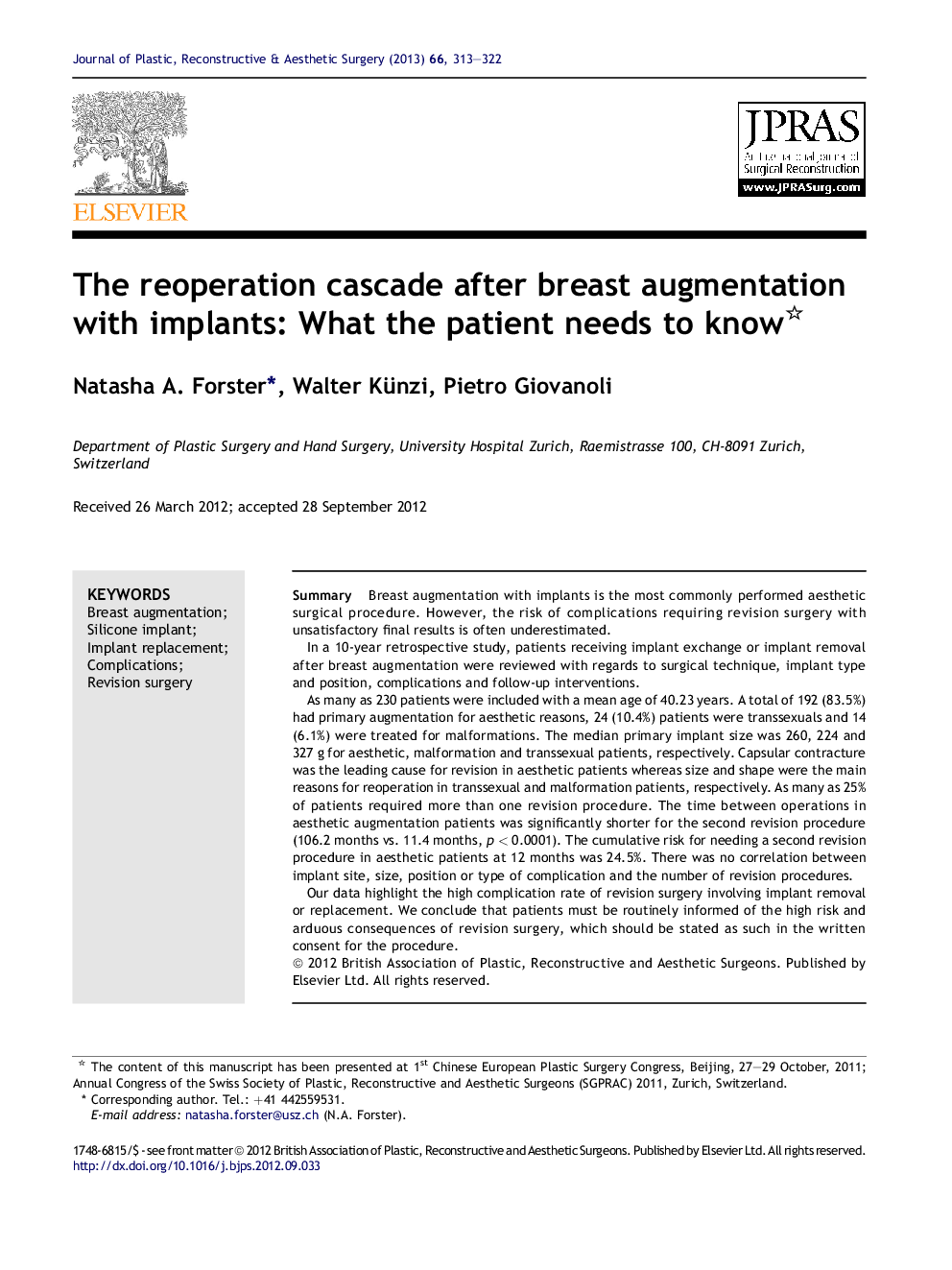| Article ID | Journal | Published Year | Pages | File Type |
|---|---|---|---|---|
| 4117952 | Journal of Plastic, Reconstructive & Aesthetic Surgery | 2013 | 10 Pages |
SummaryBreast augmentation with implants is the most commonly performed aesthetic surgical procedure. However, the risk of complications requiring revision surgery with unsatisfactory final results is often underestimated.In a 10-year retrospective study, patients receiving implant exchange or implant removal after breast augmentation were reviewed with regards to surgical technique, implant type and position, complications and follow-up interventions.As many as 230 patients were included with a mean age of 40.23 years. A total of 192 (83.5%) had primary augmentation for aesthetic reasons, 24 (10.4%) patients were transsexuals and 14 (6.1%) were treated for malformations. The median primary implant size was 260, 224 and 327 g for aesthetic, malformation and transsexual patients, respectively. Capsular contracture was the leading cause for revision in aesthetic patients whereas size and shape were the main reasons for reoperation in transsexual and malformation patients, respectively. As many as 25% of patients required more than one revision procedure. The time between operations in aesthetic augmentation patients was significantly shorter for the second revision procedure (106.2 months vs. 11.4 months, p < 0.0001). The cumulative risk for needing a second revision procedure in aesthetic patients at 12 months was 24.5%. There was no correlation between implant site, size, position or type of complication and the number of revision procedures.Our data highlight the high complication rate of revision surgery involving implant removal or replacement. We conclude that patients must be routinely informed of the high risk and arduous consequences of revision surgery, which should be stated as such in the written consent for the procedure.
